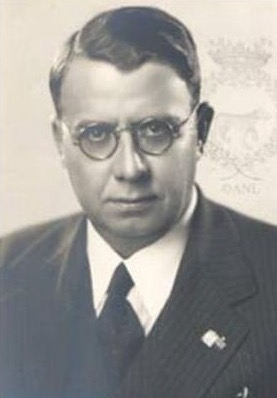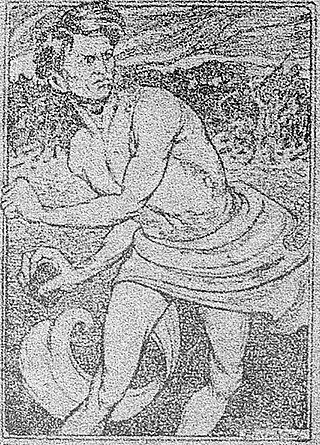
Duce is an Italian title, derived from the Latin word dux 'leader', and a cognate of duke. National Fascist Party leader Benito Mussolini was identified by Fascists as Il Duce of the movement since the birth of the Fasci Italiani di Combattimento in 1919. In 1925 it became a reference to the dictatorial position of Sua Eccellenza Benito Mussolini, Capo del Governo, Duce del Fascismo e Fondatore dell'Impero. Mussolini held this title together with that of President of the Council of Ministers: this was the constitutional position which entitled him to rule Italy on behalf of the King of Italy. Founder of the Empire was added for the exclusive use by Mussolini in recognition of his founding of an official legal entity of the Italian Empire on behalf of the King in 1936 following Italy's victory in the Second Italo-Ethiopian War. The position was held by Mussolini until 1943, when he was removed from office by the King and the position of "Duce" was dismantled, while Marshal Pietro Badoglio, 1st Duke of Addis Abeba was appointed Presidente del Consiglio.

Alceste De Ambris was an Italian journalist, socialist activist and syndicalist, considered one of the greatest representatives of revolutionary syndicalism in Italy.
Fascio is an Italian word literally meaning "a bundle" or "a sheaf", and figuratively "league", and which was used in the late 19th century to refer to political groups of many different orientations. A number of nationalist fasci later evolved into the 20th century Fasci movement, which became known as fascism.

Giacomo Acerbo, Baron of Aterno, was an Italian economist and politician. He is best known for having drafted the Acerbo Law that allowed the National Fascist Party (PNF) to achieve a supermajority of two-thirds of the Italian Parliament after the 1924 Italian general election, which saw intimidation tactics against voters.
Gioventù Fascista was a magazine designed for youth in Italy under Benito Mussolini's Fascist state. Its features included stories and cartoons praising the regime and inculcating the tenets of Fascism.

Unione Sindacale Italiana was an Italian anarcho-syndicalist trade union. It was the Italian section of the International Workers' Association, and the name of USI was also abbreviated as USI-AIT.

Opera Nazionale Balilla (ONB) was an Italian Fascist youth organization functioning between 1926 and 1937, when it was absorbed into the Gioventù Italiana del Littorio (GIL), a youth section of the National Fascist Party.

The Fasci Italiani di Combattimento was an Italian fascist organisation created by Benito Mussolini in 1919. It was the successor of the Fasci d'Azione Rivoluzionaria, being notably further right than its predecessor. The Fasci Italiani di Combattimento was reorganised into the National Fascist Party in 1921.
Squadrismo was the movement of squadre d'azione, the fascist militias that were organised outside the authority of the Italian state and led by local leaders called ras. The militia originally consisted of farmers and middle-class people, who created their own defence from revolutionary socialists. Squadrismo became an important asset for the rise of the National Fascist Party, led by Benito Mussolini, and systematically used violence to eliminate any political parties that were opposed to Italian Fascism.
Cesare Rossi was an Italian fascist leader who later became estranged from the regime.
This is a list of words, terms, concepts, and slogans in the Italian language and Latin language which were specifically used in Fascist Italian monarchy and Italian Social Republic.
The Fascio Rivoluzionario d'Azione Internazionalista was a political movement that advocated Italy's participation in World War I on the side of the Triple Entente against the Central Powers. The movement's manifesto was drawn up on 5 October 1914 by revolutionary syndicalists and left interventionists former members of the Unione Sindacale Italiana. The usefulness of the First World War was asserted as an indispensable historical moment for developing more advanced societies in a political-social sense. The manifesto inspired the formation of the Fasci d'Azione Rivoluzionaria.

The Fasci d'Azione Rivoluzionaria was an Italian political movement founded in 1914 by Benito Mussolini, and active mainly in 1915. Sponsored by Alceste De Ambris, Mussolini, and Angelo Oliviero Olivetti, it was a pro-war movement aiming to promote Italian entry into World War I.
Sansepolcrismo is a term used to refer to the movement led by Benito Mussolini that preceded Fascism. The Sansepolcrismo takes its name from the rally organized by Mussolini at Piazza San Sepolcro in Milan on March 23, 1919, where he proclaimed the principles of Fasci Italiani di Combattimento, and then published them in Il Popolo d'Italia, on June 6, 1919, the newspaper he co-founded in November 1914 after leaving Avanti!
The Futurist Political Party was an Italian political party founded in 1918 by Filippo Tommaso Marinetti as an extension of the futurist artistic and social movement. The party had a radical program which included promoting gender parity and abolishing marriage, inheritance, military service and secret police. The party was absorbed into the Fasci Italiani di Combattimento in 1919.

The Piazza San Sepolcro is a piazza in the center of Milan not far from the Piazza del Duomo.
The Formazioni Di Difesa Proletaria were Italian anti-fascist formations, born during the two-year Biennio Rosso period in Italy (1919–1920), later organized as a united front between 1921 and 1922.
Left-interventionism was the part of the progressive interventionist movement of various left-wing matrices, such as those of Mazzinian, social reformist, democratic socialist, dissident socialist, reformist socialist, and revolutionary socialist persuasions, that saw in the Great War the historical opportunity for the completion of unification of Italy, and for those who later became part of the Italian fascist movement, such as Benito Mussolini, as the palingenesis of the Italian political system and the organization of the economic, legal, and social system, and therefore a profound change.
The 1st Congress of the Fasci Italiani di Combattimento was held in Florence on 9 and 10 October 1919, following the proclamation of the Sansepolcro program on 23 March of the same year by Benito Mussolini.
The Italian Labour Union was an Italian national syndicalist trade union, active between 1918 and 1925. It is not to be confused with the current homonymous trade union established in 1950, which has no connection nor continuity with it, if not in the name.









